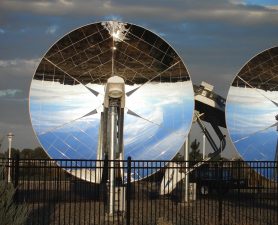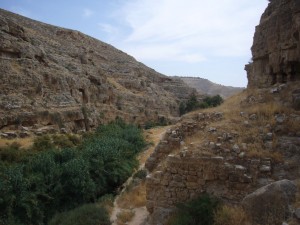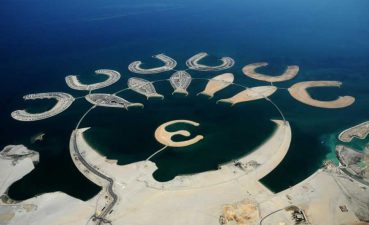 A handful of new lakes popping up in the vast and formidable Arabian desert are creating whole new ecosystems and attracting rare bird species that breed among the dunes. And, technically, it’s not a naturally-occurring phenomenon.
A handful of new lakes popping up in the vast and formidable Arabian desert are creating whole new ecosystems and attracting rare bird species that breed among the dunes. And, technically, it’s not a naturally-occurring phenomenon.
NPR traveled to the United Arab Emirates to witness firsthand one such lake that rose 35 feet in the last year alone. It was populated by cormorants, herons and even Ferruginous ducks, as well as fish and other species that couldn’t normally survive the harsh desert environment.
Dave Clark, a hydrologist with the U.S. Geological Survey told NPR that “this lake began to emerge from the sand a few years ago.”
Water taken from the Arabian/Persian Gulf for desalination is pumped to the city of Al Ain, where it is used for drinking, plumbing and other daily needs. It is then flushed to the waste water plant, where is treated.
After the water has been scrubbed, it is used to irrigate the city’s various parks and gardens, of which there are many. Al Ain is known as the “Garden City” because of its abundance of greenery.
Then the water seeps into the ground and eventually makes its way into the surrounding desert. The rising lake outside of Al Ain is one of several similar lakes that are pushing through the sand.
While locals are taken by the water, which is perfectly clean, at least one scientist is concerned that these new lakes will destroy the existing dune habitat.
Brigitte Howarth, an ecologist at Zayed University in Dubai, told NPR that in 2010 she discovered that the midas fly lays its eggs in the area, but since it requires loose, dry sand to be successful, the influx of new water is “a death sentence.”
Clark, who is less concerned, cites the Arabian desert’s sheer enormity: 900,000 square miles of desert wilderness stretches from Yemen to the Persian Gulf and Oman to Jordan and Iraq.
Instead, he is excited about the new birds. He told NPR that each year up to five new species arrive, which is unheard of in the desert. While birds are constantly being pushed afield in eroded landscapes across the earth, at least here they have a new sanctuary.
:: NPR
Image of puzzle-shaped pool in the desert, Shutterstock used for illustrative purposes only.




From what I have read of the mydas fly, it is abundant throughout the world in all desert areas. I don’t think these lovely lakes are going to decimate its population.
Been seeing something similar to this in Muscat for the past two decades, at the lagoons.